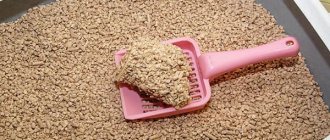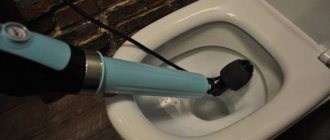In intimate relationships, safety is very important, because rash actions can lead to disastrous consequences. Beginners are worried that they don't know how to use a condom and are afraid of getting into an awkward situation that will make the girl laugh. But if you use them correctly, you don’t have to worry about sexually transmitted diseases, or the possibility of an unplanned pregnancy.
How to use the remedy?
For a condom to be effective as a form of contraception, it must be used correctly. It is more convenient to open the package along the serrated edge; it is specially designed for this. During passion, you want to perform this manipulation as quickly as possible, but you should not lose your head. Do not use scissors or other sharp objects or cut the foil, as this may damage the condom itself. In addition, you need to know why condoms should not be thrown into the toilet, and what to do with them next.
The next step is to determine how the condom is rolled. If it happens in the dark, this can be done by touch. For this purpose, you need to hold the rolled ring in your hand and carefully unfold the protective device with your fingers. If you can’t do this, it means the direction is chosen incorrectly. Do not roll out the condom too much, as it will be more difficult to put on, and its effectiveness may decrease. When the correct direction is chosen, you need to roll the contraceptive back.
Whether or not you can flush toilet paper in the 21st century
However, those who have been flushing ordinary toilet paper down the toilet for many years notice that this does not in any way affect the operation of the sewer system. And they are sincerely surprised when they hear prohibitions in this regard and see angry announcements.
This is natural - after all, recycled paper easily dissolves in water and cannot in any way harm the flow of water and waste. This applies to both new buildings and Soviet-era houses where the sewage system is old. What about country houses? Yes, nothing will get clogged there either if wide pipes were used when carrying out communications. In most cases, it will not interfere even with autonomous systems that use septic tanks.
Is it necessary to apply lubricant?
It depends on the man's preference, but if the penis is uncircumcised, a small amount of water-based lubricant can be added. This will make the condom fit better. But you should check that there is room for the sperm. It’s important to know why you can’t flush condoms down the toilet, so the guy won’t end up in a stupid position.
You should only wear a condom when your penis is erect. It is necessary to ensure that no stretched or, conversely, sagging areas are formed. In this case, the protective equipment can easily come off or be damaged during sexual intercourse.
If the erection is not yet complete, you should put the condom aside with the scum-collector facing up, so as not to be confused later on how to put it on.
Disposal methods
Many guys and girls, both young and not so young, who have only recently or have been using condoms for a long time, do not know what to do with this contraceptive after it has already played its intended role.
Some of them, not knowing why a condom should not be flushed down the toilet, feed it to a white porcelain device in the toilet. And after that they have a lot of troubles both with other inhabitants of the home (if the condom floats back up) and with the plumbers of the housing office (if this latex contraceptive gets stuck somewhere in the sewer riser of the house).
To resolve all your doubts once and for all, below are detailed instructions describing what to do after using this method of contraception:
- After finishing sexual intercourse, you don’t need to immediately ask your partner what to do next and why you can’t flush condoms down the toilet. First of all, you must remove it from the penis correctly, otherwise it will slip off the organ and get stuck in the vagina, and this is fraught with many far-reaching consequences.
- Having dealt with the first point, there is no need to throw the used contraceptive under the bed or throw it out the window. In the first case, you will be dissatisfied with the kitten living in the house, in the second - with the mothers walking under the windows and the janitors, who are also very interested in why you can’t throw a condom into the toilet, but you can on the street.
- In order not to spoil a romantic evening with showdowns with janitors and plumbers, you just need to tie a knot at the end of the used contraceptive, wrap it in a napkin and put it in the trash.
How to put on a condom?
It is very important to pinch the semen collector to release the air. This will reduce the risk of damage and make room for the sperm. Then the used product can be carefully removed and thrown away, knowing why condoms should not be flushed down the toilet.
The condom should roll out along the penis. If the direction was chosen incorrectly, you need to remove it and start over. If pre-ejaculate gets on the outside, the product cannot be used. This fluid may contain sperm, and there is a high risk of contracting STDs.
The method of putting on a condom depends on whether the penis is circumcised or not. In the first case, you need to clamp the sperm collector and place the contraceptive on the penis. Use your other hand to push back your pubic hair, if necessary, and carefully roll out the condom, being careful not to create any bubbles. Then you need to remove it and, remembering why you can’t flush condoms down the toilet, wrap it in a napkin and throw it in the trash.
If the penis is uncircumcised, you need to clamp the sperm collector and put a condom on the head of the penis. With the other hand, you need to push back the hair, roll out the product and push back the foreskin. Having released the sperm collector, you should take the rolled ring and roll it lengthwise. Holding the bottom of the condom at the base, with your other hand you need to insert the foreskin into the middle of the product. When there are bubbles, they must be removed.
If a condom breaks during intercourse, you should discuss with your partner the possibility of using emergency contraception to avoid pregnancy. It is also worth remembering that if the type of sex changes, the condom must be changed.
Immediately after ejaculation, you need to remove the protection. The next question that worries beginners is where to put used condoms. First of all, the product should be tied in a knot to prevent seminal fluid from leaking out. Then you need to wrap it in toilet paper or a napkin and throw it in the trash.
Is it okay to throw this down the toilet?
8. Dental floss
tab1962
From the outside it seems that it is just a thin thread, but it does not decompose. In addition, it also has one bad property.
When you flush it, it gets wrapped around other items in the drain, resulting in you having to call a plumber because of the clump that forms.
9. Fats
Pradit_Ph/Getty Images
Almost all of us have flushed the fat remaining after cooking down the toilet, but this is a very bad habit. When the grease is hot, it looks like a liquid, but as soon as the greasy product enters the drain, it cools and solidifies, turning into a lump of fat that clogs the pipes.
Over time, the hole in the pipe will become narrower and narrower until there is nothing going through it at all.
10. Cat litter
abfoto
Although you may think that litter has a place in the toilet, it should not be flushed down the toilet.
First, cat litter consists of clay and sand, and these things should not go down the drain. Secondly, cat feces often contain toxins and parasites that end up in the water supply.
11. Disposable diapers
Eskemar/Getty Images Pro
Just because your baby pooped in his diaper doesn't mean you can throw it in the toilet. Diapers contain toxic plastic that swells when exposed to water.
The chances of it slipping down the drain pipe are very low, and as a result, you will have to call a professional to remove the clog.
12. Tampons and pads
Alina Indienko/Getty Images
There's a good reason why you often see warnings against throwing feminine hygiene products down the toilet.
These hygiene items have absorbent properties and can expand in size, making it difficult to pass through the pipe. In addition, the material from which they are made does not decompose.
13. Hair
Buriy/Getty Images
Oddly enough, although hair seems natural to us, it can play a cruel joke on your pipes.
Not only do they clog the drain, but they also trap other items, leading to unpleasant odors and slow drainage.
It seems that a few hairs falling into the toilet should not cause serious problems, but they tend to accumulate.
Warning
You cannot use a contraceptive several times, even if there is no liquid in it. A condom is a disposable product. If the packaging has been damaged, do not use the product.
Under no circumstances should oil-based lubricants be used. They soften the latex and destroy it. To avoid unpleasant consequences, fans of non-standard condoms should consult a doctor and find out how to use them correctly, and also think about where to put the used condom after sex.
Removing sewer blockages
Clearing the blockage
The methods for removing blockages for all types are almost the same; they usually differ slightly. The most important thing in this matter is to be confident in your actions and know how sewer pipes work. If you don’t have the slightest idea about this, contact a specialist so as not to worsen an already deplorable situation.
If you feel confident and no trembling in your hands, you can start. At the moment, there are many ways to not only eliminate, but also prevent blockages, the implementation of which does not require large financial and time expenditures.
Prevention methods
The two simplest and least expensive methods of prevention, as mentioned above, are refraining from disposing of waste through the sink or toilet, as well as using special meshes for the bathtub or sink. These meshes are designed to block excess debris from entering the sewer pipes.
Another simple method of preventing blockages is flushing the pipes. To do this, you need to turn on hot water at least several times a week. The jet must be powerful and must fall directly into the drain hole. Leave the tap open for 10 minutes. Using this method, you can prevent blockages and dissolve deposits already present on the walls of the pipes.
Cleaning the sink with vinegar and lemon juice
Step 1:
This method is best suited for cleaning pipes under the sink. To begin clearing the clog with vinegar, you need to drain all the water in the sink. If it drains very slowly, you will have to wait, because in an empty sink the prepared mixture will act many times faster. If you really don't have time, you can scoop out the excess water from the sink.
Step 2:
Next, you need to find the following, or at least some of them, in your kitchen: apple cider vinegar, white vinegar, baking soda, sodium tetraborate, or salt. They can be combined with each other, because each has unique properties.
Vinegar (apple or white) can serve as an acid base for the foaming reaction. Lemon juice has the same acidity as vinegar, but smells much fresher and more pleasant. This makes it one of the favorites when cleaning pipes. Baking soda is often used as a universal and natural detergent, as is borax - sodium tetraborate, and salt will help to eat away the resulting clog.
Combining them - for greater effectiveness - is in the following combinations: vinegar + baking soda, lemon juice + baking soda, salt + borax + baking soda. To enhance the effect, the ingredients must be mixed in certain proportions.
For the vinegar + baking soda combination: ½ cup vinegar and ½ cup baking soda. For the lemon juice + baking soda combination: 1 cup lemon juice and 1 cup baking soda. And finally, for the salt + borax + vinegar combination: ¼ cup sodium tetraborate, ¼ cup salt and ½ cup vinegar.
Step 3:
Once you have chosen the combination that works for you and have it ready, pour it into the sink so that most of it ends up in the drain hole. To achieve greater effect, close the hole with a special plug or cover it with a hot cloth. Leave the sink like this for 30 minutes.
Step 4:
Clear any remaining clog using a plunger. In this case, it will only have an auxiliary value, because the mixture you prepared will dissolve the main part of the blockage. For final cleaning, fill the sink a little with water. Then place the plunger firmly against the hole and apply pressure, then release, then apply pressure again. Repeat the procedure several times. Remove any remaining debris.
Step 5:
Open the tap and fill the sink with hot water, the stream can be continuous - 5-7 minutes will be enough. Hot water will easily remove the last remnants of the blockage. This method is quite effective and helps in most cases, but there are also blockages that citric acid cannot overcome. Then another useful method comes into play.
Signs and superstitions
Most folk wisdom was formed many years ago, when no one thought about contraception. But even in the modern world, 2 beliefs about condoms have appeared:
- If you flush contraceptives down the toilet, your unborn child will suffer. His life will be, to put it mildly, like the contents of a sewer pipe.
- This can lead to infertility. Seeing how carelessly a person handles the beginnings of life, the Universe can punish him by depriving him of the ability to have children.
So, you shouldn't flush contraceptives down the drain. This can cause problems with a clogged pipe, and you will have to call a plumber. But the main problem is not even this, but the negative impact of latex on the environment. If every person harms the world around him, then nothing good will end.
Can lead to disastrous consequences. Beginners are worried that they don't know how to use a condom and are afraid of getting into an awkward situation that will make the girl laugh. But if you use them correctly, you don’t have to worry about sexually transmitted diseases, or the possibility of an unplanned pregnancy.
Conclusion
Now you know exactly why you shouldn’t flush condoms down the toilet. It will also be useful for you to know that you should not travel through the city sewer pipes. However, if somehow the plumbing fixture in your restroom is still clogged, you can easily clean it with your own hands when you watch the video in this article to the end.
On the packaging of contraceptives of any brand, you can find a mark that states that they should not be thrown into the sewer. Few people actually follow this rule, and those who read it wonder why they shouldn’t throw a condom down the toilet.
?
Logical explanation for the ban
On the packaging of contraceptives from most well-known brands there is a warning that flushing the products down the drain is prohibited. There are 4 objective reasons for this:
- Condoms come in latex and polyurethane. Both materials are insoluble in water. Rubber can remain intact for centuries, disrupting the natural state of the ecosystem.
- The contraceptive is quite capable of getting caught on something, stretching and getting stuck in a pipe outlet or elbow. This will cause a blockage in the system, problems with neighbors and interference from the housing office. After all, chemicals used to clean traffic jams are powerless against rubber.
- Rubber products interfere with the operation of wastewater treatment plants and stop the operation of processing equipment. Most often, pump impellers are affected - the contraceptive is wound around this element and causes it to spin in the opposite direction.
- When a plumber takes a “not the first fresh” condom out of the pipe, he will almost certainly charge more than usual for the work. This is not surprising.











